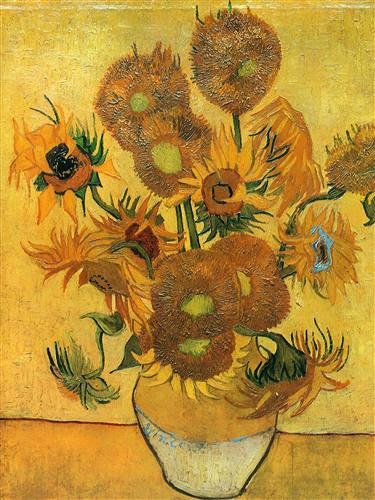We then looked at two different paintings by Vincent Van Gogh. If students saw mostly warm colors, they held up a "w" with their hands and if they saw mostly cool colors, they held up a "c." First we looked at Vase with Fifteen Sunflowers, which we decided had mostly warm colors.
 | |||||||
Vincent Van Gogh, Vase with Fifteen Sunflowers (1888)
Students noticed all the warm colors, like the red and orange in the middle of the flowers and the yellow petals and background. Then we looked at Starry Night, also by Vincent Van Gogh, and many students recognized it from having seen a poster of the painting on the wall of the art room.
Students noticed the cool colors in the swirling night sky, noting the different blues and greens. Many students thought that the way Van Gogh used the warm colors for the moon and stars helped make them stand out in the night sky.
|












